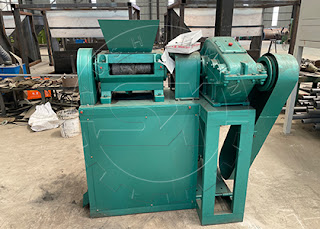What is the compound fertilizer production process?
Compound fertilizer production line.
The process flow of the compound fertilizer production line can usually be divided into: raw material ingredient, raw material mixing, raw material granulation, particle drying, particle cooling, particle classification, finished product coating, and then finished product packaging.
 |
| SX NPK compound fertilizer processing plant |
Performance characteristics.
The compound fertilizer production line has low investment, quick results and good economic benefits. The complete set of equipment has a compact flow layout, scientific and reasonable, and advanced technology. Energy saving and consumption reduction, no three wastes are discharged, stable operation, reliable operation and convenient maintenance. The raw materials have wide adaptability, suitable for the granulation of various raw materials such as compound fertilizer, medicine, chemical industry, feed, etc., and the product granulation rate is high. It can produce compound fertilizers of various concentrations and various types (including organic fertilizer, inorganic fertilizer, biological fertilizer, magnetic fertilizer, etc.). Especially for the granulation of thinner, ammonium bicarbonate series compound fertilizer.
 |
| BB fertilizer production line for sale |
Compound fertilizer production line process
1. Raw material ingredients: urea, ammonium nitrate, ammonium chloride, ammonium sulfate, ammonium phosphate (monoammonium phosphate, diammonium phosphate, heavy calcium, ordinary calcium), potassium chloride (potassium sulfate) and other raw materials are equipped in a certain proportion (according to Market demand and soil testing results in various places).
2. Mixing of raw materials: Stir the prepared raw materials evenly to increase the uniform fertilizer efficiency content of the overall fertilizer particles.
3. Raw material granulation: Feed the well-stirred raw materials into a granulator for granulation (rotary granulator or extrusion granulator can be used).
4. Granule drying: The granules made by the granulator are sent to the dryer, and the moisture contained in the granules is dried to increase the strength of the granules and facilitate storage.
 |
| 10-15tons/h Compound Fertilizer Processing Line |
5. Granule cooling: The temperature of dried fertilizer granules is too high and easy to agglomerate. After cooling, it is convenient to store in bags and transport.
6. Particle classification: The cooled particles are classified, the unqualified particles are crushed and re-granulated, and the qualified products are screened out.
7. Finished film: Coating qualified products to increase the brightness and roundness of the particles.
8. Finished product packaging: Pack the coated particles, which is the finished product, in a ventilated place.
Characteristics of compound fertilizer produced
●The nutrient of the product particles is equal and balanced.
Because it is a chemical synthesis granulation, the nutrient content of the granular fertilizer is the same as the label, and it can provide the crops with nitrogen, phosphorus, potassium and other nutrients at a certain ratio to ensure balanced growth of the crops.
● Good physical properties of the product.
The particle size distribution of the product is uniform, 90% of which are particles with a particle size of 2-4 mm; the particles have high strength, good fluidity, and are not easily broken during transportation, storage and stacking. The design incorporates foreign advanced technology to further optimize the design performance of the device.
SX: https://www.fertilizer-plants.com/
Email: info@fertilizer-plants.com
Phone: +86 180 3757 2883



Comments
Post a Comment